Since ancient times, the Maltese archipelago, which is placed in the heart of the Mediterranean Sea, was recognized by different empires as a strategically important area. Its position made the archipelago, which is consists of three islands (Malta, Gozo and Comino), a real bridge between Africa and Europe. Many great civilizations left traces there and the presence of the various cultures, traditions, and empires can be seen around Malta, and also on the two other islands.
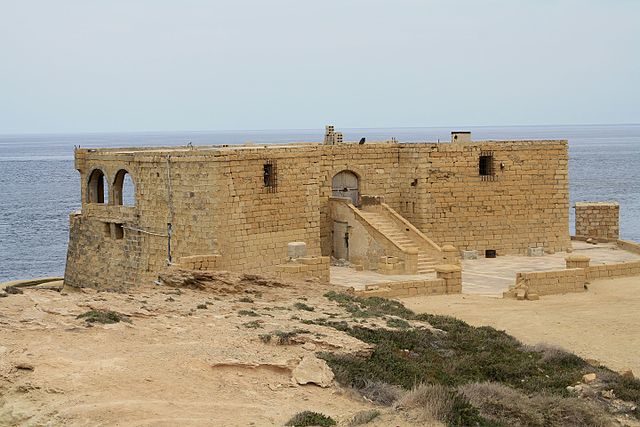
Because it was seen as a strategically important location, there are many structures, especially on the edges of the islands, of military character. There can be found a fortress from the medieval period, but also fortified positions from World War I and World War II. Many of them have long since been abandoned and today are left to decay under the hot Mediterranean sun. However, preserved precious artifacts can be still found which vividly depict the rich history of Malta, and demonstrate military techniques from the past.
Qolla l-Bajda Battery is located near the small village of Marsalforn, now a popular tourist resort, above the blue sea waters on the north coastline of the island of Gozo. Construction of the fortification was started in 1715 and completed in 1716, by the Order of St. John. The structure is perfectly camouflaged in the surroundings, blending with the surrounding rocks as it was built from local limestone bricks. The name of the coastal battery comes from the nearby hillock which is called Qolla l-Bajda. It is also known as Xwejni battery, Qbajjar Battery, or Castello.
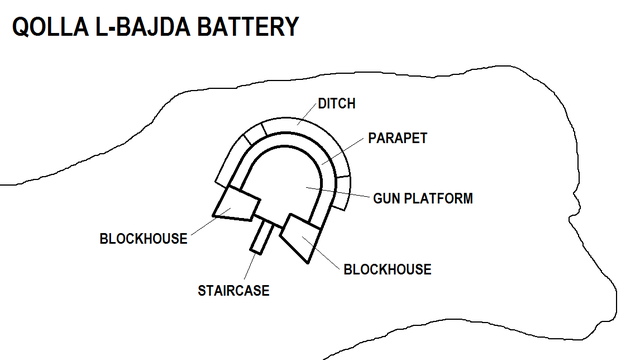
Originally the battery was formed of a semi-circular gun platform protected on the seaward side with a defense wall and a ditch. The other side was protected by two blockhouses which were connected by a wall. There was a drawbridge with a few steps that led to the main entrance of the battery. The walls of the blockhouses had arrow slits for guns, made to be used during an attack from land.
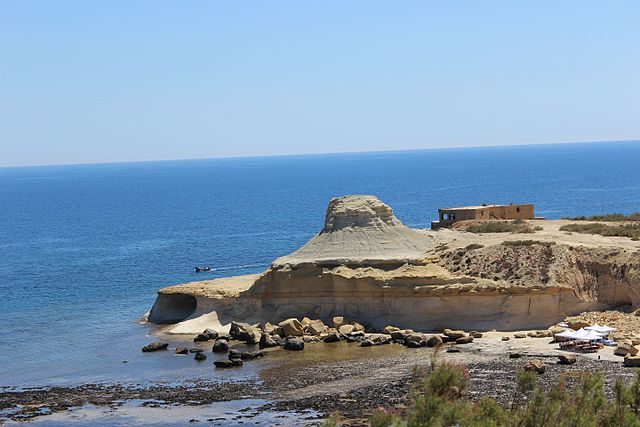
Its main purpose was to the protect Marsalforn Bay and the other neighboring bays in the event of attack from Barbary or Ottoman warships. The site was deserted from the 19th century until the days of World War II, when it was activated again as observation post No. 5. After the war it was closed and left to decay. In the 1980s the building was renovated and adapted into a discotheque and night club, named Rook. Some modifications were made in order to satisfy the needs of its new purpose. For example, the entrance was enlarged and the drawbridge was turned into staircase. But, in 2003, the bar closed and again the structure was abandoned.
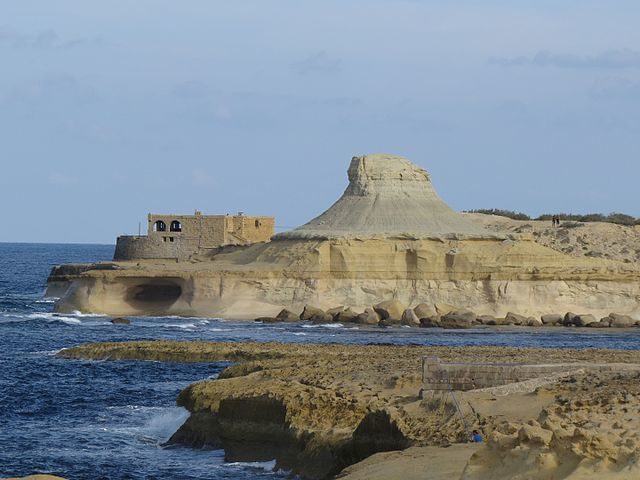
Throughout the years the site has been vandalized several times. The most benign acts of vandalism were the art expressions of individuals manifested in various styles of graffiti. The place was left empty and without the needed care because a private company and the Republic of Malta were in a legal battle over the ownership of the location. In recent years urgent repairs were made and the walls of the structure cleaned, but the site is still in bad condition and in need of restoration in order for it to be saved and preserved for future generations. Since being closed to public, it has become a haven for fearless adventurers and urban explorers.
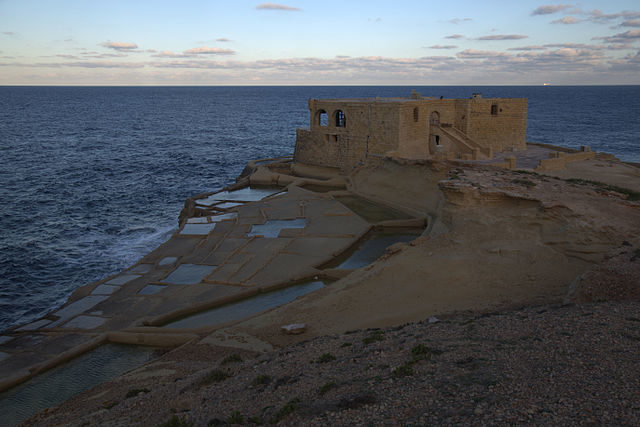
Knowing the fact that it is the only surviving structure from the ancient defense line formed of several towers, batteries, and other fortifications, built to protect the waters and the bays along the north coast of Gozo and the nearby towns of Xagħra and Żebbuġ from enemy attacks, presses the need for preservation work to be done without hesitation. The site isn’t only part of the cultural heritage of Malta, but also part of the history of the entire Mediterranean region.
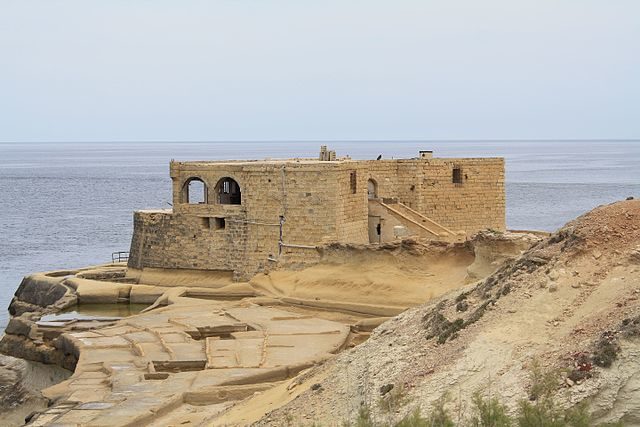
Two other interesting features located nearby are worth mentioning. One is the complex of salt pans placed next to the battery, which are also in a state of disrepair. The other is the strangely shaped hillock, known as Qolla l-Bajda (The White Hillock). It is one of the many unique hills spread across the islands of Gozo and Malta that have different colors and strange shapes in contrast with the “normal” hills on the island. It has a grayish clay foundation and yellow sandstone top, with a number of crystals and small black stones to be seen at the surface. But what is extremely mysterious about this hill is that there are iron stones and iron rods that come out from the rock. This only deepens the mystery and gives a little bit of fantastic flavor to the imagination that the hill is not natural, but maybe a man-made structure, or at least that there was an intervention in the distant past from an unknown civilization.
